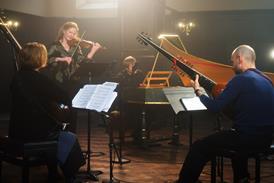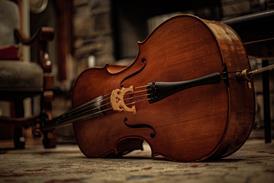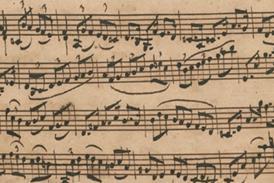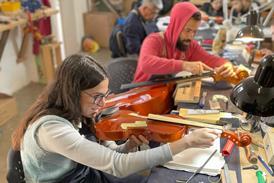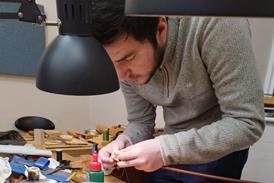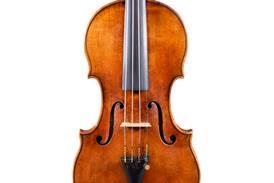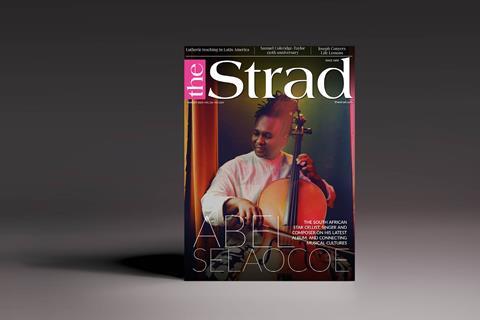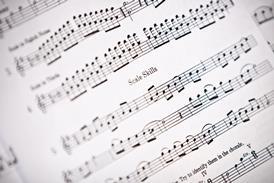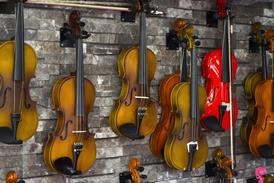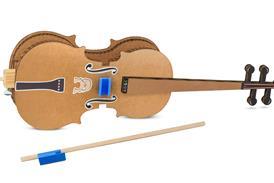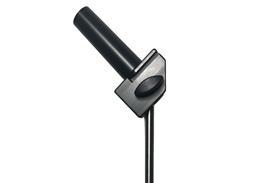All Amati articles
-
 Premium ❘ Feature
Premium ❘ FeatureIn Focus: A 1659 violin by Nicolò Amati
Colin Adamson examines a mid-17th-century violin by the revered Cremonese maker
-
 Blogs
BlogsViolin trivia: Can you beat the VSA’s top brains?
Test your violin knowledge with some of the questions from the VSA convention’s Trivia Night on Monday 18 November
-
 News
NewsAmati five-string cello bought by New York museum
The c.1610 instrument is thought to be the only surviving five-string cello made in Cremona from that era
-
 Video
VideoMozart performed on two Amati instruments: Quartetto di Cremona
Simone Gramaglia and Paolo Andreoli were loaned instruments by Andrea and Nicolò Amati on a recent tour to Taiwan
-
 Premium ❘ Feature
Premium ❘ FeatureA Massive Achievement: the 1677 ‘Romanov’ Nicolò Amati viola
Made in 1677, the ‘Romanov’ Nicolò Amati viola is one of the maker’s late masterpieces
-
 Gallery
GalleryIn Focus: a 1622 Brothers Amati Cello
In this article from the Strad’s June 2014 issue, Christopher Reuning examines an elegant masterpiece of delicacy and strength
-
 News
NewsThe Strad July 2022 issue is out now!
We take an close-up look at a 1671 violin by Girolamo Amati II - the last and least-recognised maker in the illustrious lutherie dynasty
-
 Video
VideoA Far Cry performs Tchaikovsky’s Serenade on Cremonese instruments
Musicians from Boston chamber orchestra A Far Cry perform the first movement from Tchaikovsky’s Serenade for Strings from memory on Cremonese instruments selected from the vault of Reuning & Son
-
 Premium ❘ Gallery
Premium ❘ GalleryFrom the Archive: a Niccolò Amati violin, 1654
This illustration of an Amati violin was published in The Strad, April 1913. The following text is extracted from the article accompanying the photographs
-
 Focus
FocusA beginner's guide to identifying a Stradivarius
Figuring out the maker of an unknown violin takes a trained eye and a detective’s skill, says luthier John Dilworth. Here he gives his personal perspective on the clues and processes of elimination that help experts pinpoint an instrument’s origins. From the July 2010 issue
-
 News
NewsObituary: viola and violin soloist Luigi Alberto Bianchi, 1945-2018
Menuhin protégé who in later years swapped fluidly between violin and viola, and whose career was punctuated by the thefts of two famous instruments
-
 Gallery
GalleryFrom The Strad Calendar 2018: Viola da gamba by Girolamo Amati, 1611
Based in Cremona, the Friends of Stradivari network brings together instruments owned by collectors and stringed-instrument enthusiasts from around the world. The Strad Calendar 2018 celebrates twelve of these treasures, with this viola da gamba from the Russian State Collection featuring in July. Text by John Dilworth
-
 Focus
FocusDigital Amati: a computer program putting luthiers back in touch with ancient principles
A decade ago, François Denis’s Traité de Lutherie showed how the old Italians used Euclidean geometry to design their instruments. Now a computer program based on these principles allows luthiers to construct and adapt patterns quickly and easily. Its creator, Harry Mairson, explains the genesis of Digital Amati
-
 News
NewsViolinist Dmitri Kogan dead at 38
Scion of Russian musical dynasty with international touring career dies of lymphatic cancer
-
 News
NewsWoman, accused of destroying ex-husband's Amati among dozens of violins, arrested in Japan
Violin maker’s shop stock and collection of instruments and bows said to be worth around $1m
-
 Gallery
GalleryFrom the Archive: Antonius and Hieronymus Amati 'Henry IV' violin, Cremona, 1595
This illustration of a violin by Antonius and Hieronymus Amati was published in The Strad, April 1983. The following text is extracted from the article accompanying the photographs:Decorated violins are as old as the instrument itself. Andrea Amati of Cremona, credited with being the first known violin maker, ...
-
 Premium ❘ Gallery
Premium ❘ GalleryFrom the Archive: a violin by Nicolo Amati, Cremona, 1660-70
This illustration of a violin by Nicolo Amati was published in The Strad, April 1975
-
 News
NewsFamous double bass – formerly owned by Koussevitzky – damaged by airline
Atlanta Symphony double bassist Colin Corner was flying with Southwest Airlines to perform in Rochester, New York
-
 News
NewsThe Strad June 2015 issue is out now
We examine five centuries of alteration to the Amati 'King' cello
-
 Blogs
BlogsTracing the development of violin f-hole design through peeling an orange
Considering the f-holes of the Amati ‘King’ cello, and playing with food, led Andrew Dipper to on a possible path to evolution





